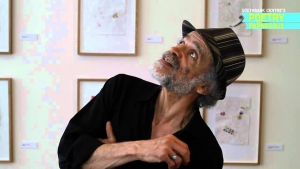
The wrath and love of the oppressed: The Book of Echoes by Rosanna Amaka
Razia Parveen reviews The Book of Echoes by Rosanna Amaka
The Book of Echoes by Rosanna Amaka is a powerful and politically potent narrative which subtly weaves the past into the present. It is a novel that shows the reader the inhumanity of Africans kidnapped and forced into slavery and resonates emotively in this year of the Black Lives Matter protests.
Amaka is from South London and has mixed heritage of Nigerian and Jamaican parents. This is her first novel and has apparently taken twenty years to complete. When you think of the subject matter this might not come as a surprise. The length of time it took to write this work partly reflects the chronology within the novel so the act of writing, like herstory, becomes a process which has taken many years.
The story tells of two lives – Michael, a Londoner, and Ngozi, a Nigerian girl. The novel brings in many other political and emotional strands while telling their story. Ultimately, we have a present-day love story cocooned inside the real horrors of the past.
The horrific conditions on board the slave ships during the journey from Africa to the Caribbean known as the Third Passage is captured in all its searing brutality. It tells a compelling tale of black history and familiarizes the reader with a narrative that has hit the headlines this year thanks to protests such as those that brought down the Colston statue in Bristol.
The novel opens with voice of an African enslaved girl from the eighteenth century looking for her child in the London docklands. This narrative recalls some of the works of the great Toni Morrison, especially Beloved which tells a similar story of the haunting of a dead baby slave. Like Morrison before her, Amaka takes the motif of a single newborn baby to represent the collective identity of an entire people enduring the yoke of racism.
As the former slave comes to London in search of her daughter in 21st century London, we are introduced to Michael, who himself is the subject of cruelty and injustice. Just like the slaves of yesterday, Michael and his family’s fate are equally tragic and blighted by racism. As the story of Michael and his sister Marcia begins to unfold like an ineluctable Greek tragedy, the comparisons between the events of the eighteenth and twentieth centuries come into sharper focus. These two eras may be separated through time but essentially represent a painful continuity for black people in terms of oppression. The idea of the white man being somehow superior is very much part of the ideology behind slavery then, and racism today. Those wanting to know what has motivated the BLM protests this year can gain considerable insight from a reading of this text.
The novel is split into sections that are entitled with the name of the narrator. So the second chapter is called Michael for instance and recounts the death of that character’s mother and its devastating impact. He also recalls the Brixton riots of 1981 along with examples of police racism:
The officer presses his knee into his back. Shut your fucking mouth wog, or I’ll shut it permanently. If I had my way, I’d send the whole bloody lot of you back on the next banana boat. Now get up (p.37).
The writer binds key historical events into the narrative making the events seem authentic and credible. However, the most innovative part of the narration is how Amaka entwines the voice of the ancestral slave into a seemingly linear narrative, like a vine:
And I look on, remembering that night in Trelawyn way back then, on the island of Jamaica when I was alive, the fields of sugar cane ablaze with the revolts, burning, the fever of freedom, to fight till we lay down dead.
This voice is only for one paragraph but its effect on the narrative is very clear – the oppression of the past is very much embedded in the oppression of the present.
The second section of the novel is called Ngozi as she takes over the narrative but at the beginning of this section, for just over a page, we hear the voice of the ancestral slave girl:
At first glance, not much has changed in Obowi, not since – well, not since I left my baby boy Uzo in the shrine, way back when my yesterdays began, as far back as one of the village folk songs remembers..…these things hint at villagers’ past and present, at the sweat and tears, and at the ghosts and souls buried beneath the dust. (p.49-50).
We are reminded again of how the past hangs over the present like a spectre of memories.
This section cuts away from Ngozi and we hear the slave girl’s voice once more. The short section is entitled The Beginning and includes a passage where the slave girl narrates. This is the most harrowing and explicit part of the novel:
I heard the sound of their whips against flesh, the sound as they hit the decks, shouting of foreign commands, and the crying and whimpering of those around me. And as I entered, dragged along by others, I looked up to the sky, looked up for my God, but he was nowhere to be found. As I went further into the hell, I caught his eyes, Wind’s eyes, and without words I begged him to save me, begging him to rescue me. (p.117-118).
Amaka here informs the reader not only of the historical facts but of the sadistic treatment the black slaves received at the hands of their white captors. The writer links the past to the present by allowing the slave girl’s voice and opinions to be heard about the now infamous statues that occupy city and town squares up and down the UK. Her voice serving as remarkably prescient warning of the headline-grabbing scenes we witnessed earlier this year. These statues have memorably become a focus point for the current BLM movement, as targets for the wrath of the oppressed.
I look up at the stern face. It’s strange to look up into the face of a man who caused your death, infected your life with his disease. I shiver and listen.
‘He was born in 1746. Robert…’
I often wonder if – no I don’t, I believe that history was truly invented for the rich and the learned. I look back at the group gathered at the statue, their faces expectant. They are young. They will never know they stand on the spot where I drew my last breaths. Their history has erased us. (p.118)
This voice is clearly angry at the offensive statues and firmly believes that they symbolize the suffering she and millions of others over the centuries have suffered. The fact that the statues of the very men responsible for this suffering are revered is an insult to the memory of countless lost souls.
We now move onto the third part of the novel’s structure, entitled Michael. Whereas in the first section we had the sixteen-year-old, we now have the older Michael:
these five years have been good to Michael. He is as tall as his sixteen-year old self could have hoped for, although not as much as his adult self would like. (p.123)
Here Amaka explores the reality of inter-racial relationships when it is revealed that Michael will only date white women:
'Listen, if you’re complaining about black women,’ continues Stanford, ‘then you’re also talking about black men – we are their fathers. All I’m saying is, what are you running away from?'…..
'then why aren’t you talking about it?’ asks Stanford. ‘Tell me this: you don’t like black women, what happens when you have a daughter, Michael? Even if the mother is white, she is going to be black – what sort of pride in herself are you going to teach her?' (p.156)
Amaka gives a reason from his past to explain his apparently strange behavior in the present. Again, the writer explores an issue which is very much in the spotlight in the 21st century, and has been debated by the BAME community for many years. Unfortunately, this issue has now been taken up by many right-wing groups and has been twisted into something divisive and contentious.
We then return to Ngozi’s story and then Michael’s again. It's interesting to note the final line of Ngozi’s narration:
Wind and I watch as it flies by and wonder in its wake (p.242)
….which then leads us back into the slave girl’s narration for a few pages. We then have Michael narrating again in a section entitled Ngozi. Next we have a break and a slave from Jamaica takes up the story:
That morning, on our first day in Jamaica, after they led us from the ship and I could no longer see him, I turned my head, looked ahead, like Wind was in the past. I did not think our paths would ever cross again. I thought I was to die, to be eaten by the devils. I did not imagine that the journey on the slave ship was the beginning of our story, not the end, that the world I left behind in the village would become a mere dream, a life lived by someone else. (p.315)
The novel climactically brings the London- born Michael together with the Nigerian Ngozi. Their union speaks of the power of the past and tells of unspeakable truths. The book concludes with the voice of the past:
They, Michael and Ngozi, called to me. It’s time for my children to be united… But there still are parts of me, my own blood, scattered like kernels of corn from Sierra Leone to Virginia, from Virginia to Nova Scotia, from Nova Scotia to Rio, from Rio to London, from London to Jamaica, from Jamaica to the Bight of Biafra, and back round again. Over two hundred years we have searched, two hundred years since my death, and at last, they’ve begun to find each other. (p. 370)
This is a brilliant novel, which reminds us of how the fate of a people in the past can return to haunt their descendants in the present. It warns us of trying too hard to erase a history which is born out of violence and fear. But it is also an evocative love song from the oppressed of the past to those in the present:
I want you to know this, my child, that you were made in love. Your freedom was fought for among the resistance and revolts of the Islands, and the sheer will and desire to be free. You will have to look to find this but find it you will.
These prophetic words of love and acceptance complete a novel that has deservedly attained wide acclaim not just due to its literary merits but also its ability to shed light on crucial political questions of our time.





